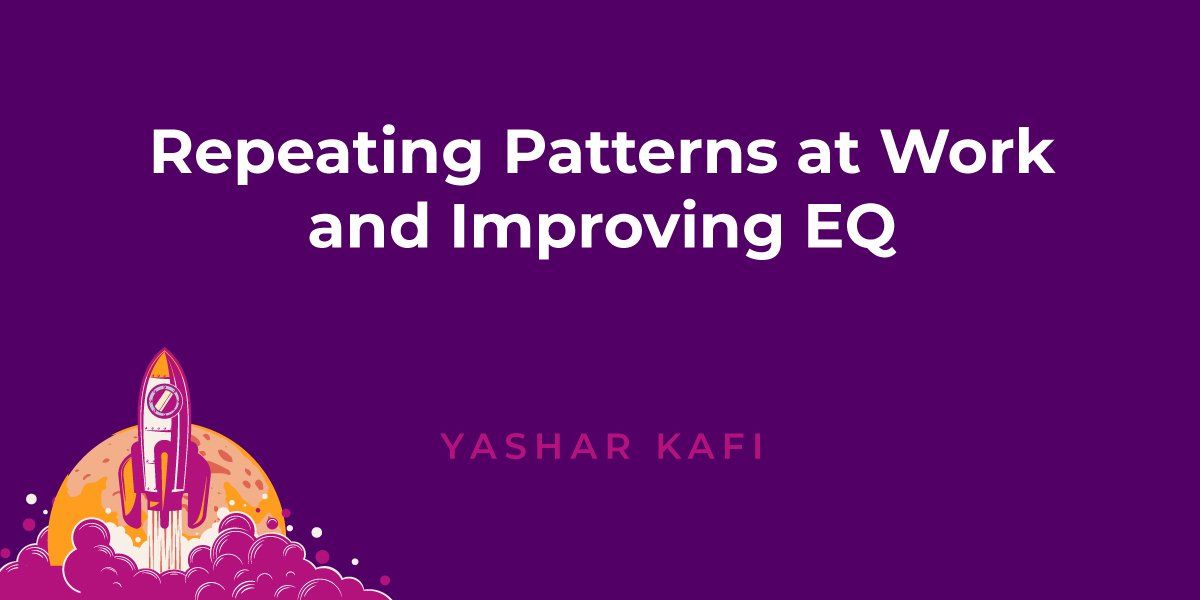Repeating Patterns at Work and Improving EQ
Emotional intelligence—otherwise known as emotional quotient, or EQ—is the ability to understand, use, and manage your emotions in positive ways to communicate effectively, relieve stress, empathize with others, overcome challenges, and defuse conflict.
Having sharp EQ is necessary for any influential leadership role. For this reason, leadership is always looking for ways of improving EQ.
If people (mainly leadership) can learn to read and understand their colleagues and juniors, they can more easily recognize patterns at work due to the improvement of EQ. This will help them stop negative patterns; it will also help them be more prepared, agile, and flexible for whatever happens next.
Recognizing Patterns – What Does It Mean?
We all tend to develop behavioral patterns. But whether these patterns are beneficial or harmful is another thing. The famous founder of psychoanalysis, Sigmund Freud, discussed “repetition compulsion.” It describes people repeating patterns of behavior they developed from events or circumstances earlier in life. After all, people often seek comfort in what’s familiar. However, sometimes these patterns are formed due to difficult or distressing events, such as trauma.
So, what do patterns—and recognizing them—have to do with improving your leadership role and increasing your EQ? Learning how to identify patterns—like negative patterns—can help you avoid repeating them in the future.
Many companies’ success can be hindered due to leaders and employees repeating negative patterns. The first step to handling these negative patterns is to learn to recognize and identify them. Then, you can address them and make changes to avoid unwanted repeats. After all, you can’t defeat what you don’t know.
Patterns at Work
Most of you already realize this, but patterns aren’t always negative, and they don’t just happen in personal relationships—they also occur at work. Some of the common patterns that might be popping up at the office include:
· Behavioral patterns that occur just before an individual gets a promotion
· Behaviors that occur just before layoffs are sent down the ladder
· Behavioral patterns that precede good news—or on the opposite end of the spectrum, bad news
Recognizing Patterns, Change, and Improving EQ
Although this sounds like an intense subject, there is no need to get paranoid. However, recognizing these behavioral signals and patterns can help you process them better.
Ultimately, certain things at work or in life are out of our control and can’t be stopped or bettered, no matter how much worrying we are budgeting we throw at them. So, if money can’t fix it, what can? Two words: improving EQ.
Improving EQ will not only allow you to better predict what’s coming, but it can also aid you in processing those things that turn out to be negative. So, improved EQ is essentially change management.
How Do You Break Negative Patterns?
Self-reflection and developing an awareness of what’s going on within yourself and your corporate environment/culture are the basic building blocks for this to succeed. A few key questions might help you discover (and break) possible negative patterns:
· When did I first experience this?
· How did I feel about it?
· What am I doing now to avoid this feeling?
· What am I doing now to stop it from happening?
· How is this affecting the choices I make at work?
Don’t be afraid to ask—and answer—the hard questions. After all, a pattern has a greater ability to become deep-rooted and widespread across many aspects of your life and career the more you repeat it. It’s crucial to identify these patterns, so you can delve into the why behind the repetition, then work to pave a new road forward on a different path (not that same old pothole-riddled street).
To learn more about how you can help your team recognize patterns at work and in life, connect with our team today.




